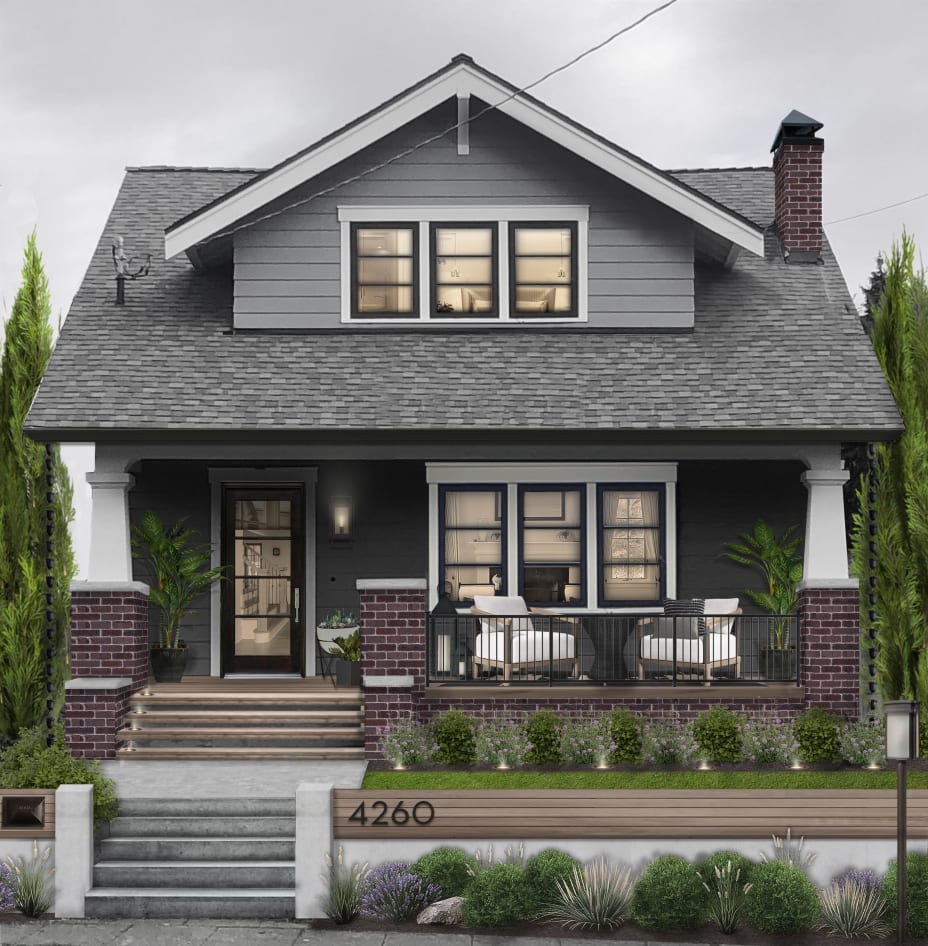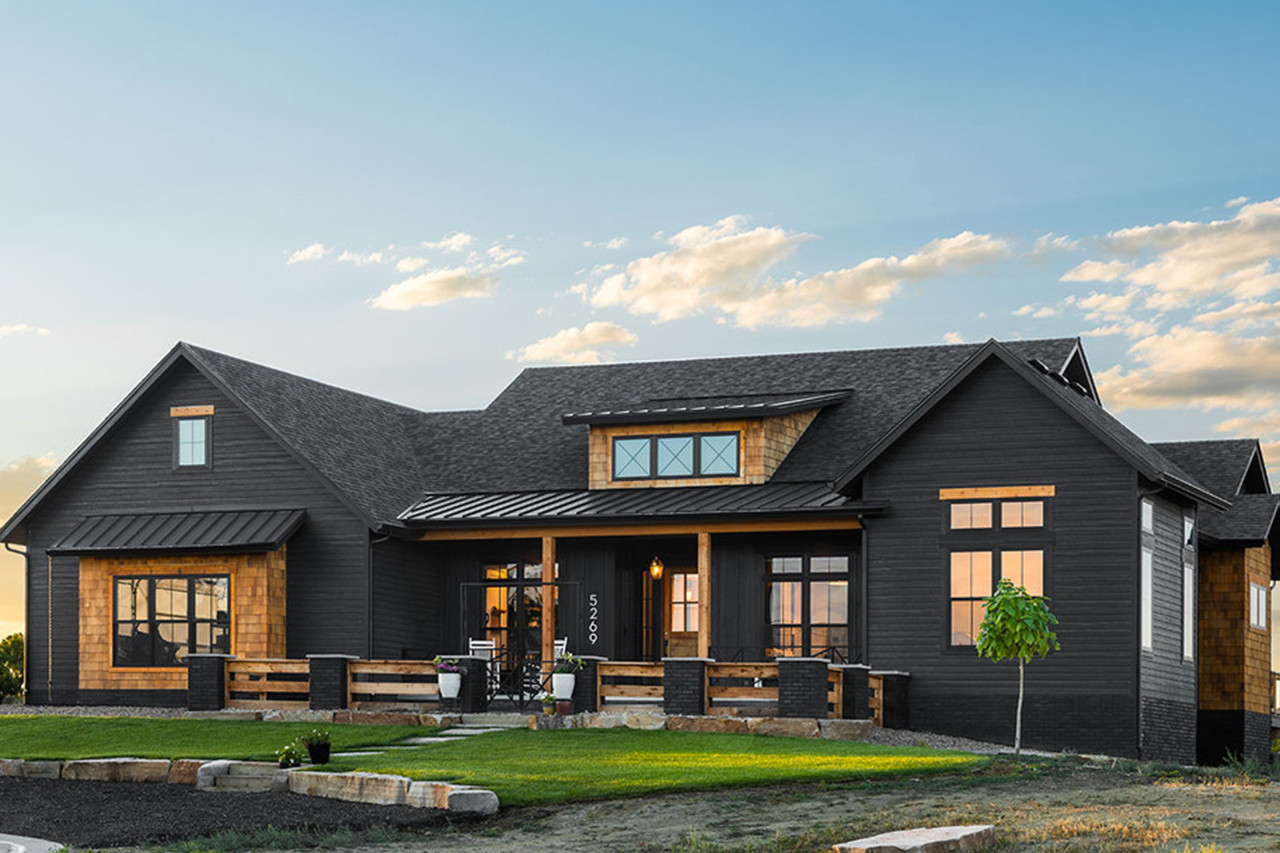Why a craftsman style house Remains Popular
Wiki Article
The Duty of Arts & & Crafts Architects in Elevating Architectural Services in Residential Design
Arts and Crafts architects substantially affect domestic design through their dedication to workmanship and sustainability. They focus on handcrafted information and natural products, which boost both aesthetics and area identification. By involving clients in the style process, these architects create special home that resonate with individual preferences. This technique elevates inquiries regarding the future trajectory of property architecture and its prospective influence on area characteristics. craftsman style house. What lies in advance for this classic layout philosophy?
The Principles of Arts and Crafts Architecture
The essence of Arts and Crafts architecture depends on its commitment to workmanship and simplicity. This building movement emerged in the late 19th century as a response to automation, highlighting the worth of handcrafted details and natural materials. The principles of Arts and Crafts architecture prioritize performance and consistency with the environment. Frameworks typically include low-pitched roofs, vast eaves, and revealed rafters, promoting a feeling of unity with nature.Artisans played a substantial duty in this design, often integrating ornamental elements like discolored glass, tiles, and woodwork, which show neighborhood workmanship. The shade palette tends to be earthy and subdued, permitting structures to mix perfectly into their surroundings. On top of that, the style motivates open layout and communal areas, fostering a sense of togetherness. Overall, the principles of Arts and Crafts architecture commemorate the appeal of simplicity and the significance of human link to both nature and community.

Sustainable Practices in Residential Design
While the demand for eco liable living proceeds to expand, lasting practices in household design have actually acquired considerable traction amongst architects and home owners alike. Architects are increasingly including energy-efficient modern technologies and lasting materials right into their styles, intending to reduce carbon footprints and boost power conservation. Approaches such as easy solar design, green roofs, and rainwater harvesting systems are coming to be typical components of contemporary property architecture.The option of locally sourced materials decreases transport discharges and supports regional economic situations. Focus on natural light and air flow not only improves interior air high quality yet additionally lowers dependence on synthetic illumination and environment control systems. These sustainable techniques show a dedication to protecting the setting while giving house owners with comfortable, effective home. As awareness of ecological problems expands, the integration of sustainability in property design is poised to end up being a specifying feature of contemporary architecture, led by the concepts established by Arts and Crafts architects.
Personalization and Customization in Home Style
Customization and customization in home design have emerged as crucial patterns in response to the expanding desire for special living environments that reflect private tastes and way of livings. Property owners significantly look for to customize areas that resonate with their personal identifications, bring about a more purposeful link with their living rooms. craftsman style house. This movement urges architects to involve clients in the design procedure, cultivating partnership that guarantees the last end result personifies This Site the property owner's visionComponents such as bespoke designs, customized materials, and tailored finishes enable a varied array of expressions in property layout. Arts and Crafts architects play a crucial function in this advancement, highlighting craftsmanship and top quality. Their concentrate on integrating creative components with performance assurances that each home is not only aesthetically pleasing but additionally distinctively matched to the inhabitants' requirements. This emphasis on modification boosts the total household experience, developing spaces that are both individual and enduring.
The Effect of Arts and Crafts Architects on Neighborhood Visual Appeals
As neighborhoods advance, the influence of Arts and Crafts architects greatly shapes their aesthetic landscape. By stressing handmade information, all-natural materials, and typical building and construction strategies, these architects create homes that reverberate with their surroundings. Their designs frequently integrate regional vegetations, textures, and shades, fostering a feeling of harmony in between constructed environments and nature.Additionally, the Arts and Crafts movement advertises area identification via architectural connection. By urging homeowners to take on similar style concepts, neighborhoods create a natural character that enhances aesthetic appeal. This architectural harmony not just enhances the aesthetic experience however likewise infuses a feeling of satisfaction among residents.
Additionally, the emphasis on sustainability and craftsmanship in Arts and Crafts architecture lines up with modern values, making these designs appropriate in modern settings. Inevitably, Arts and Crafts architects contribute significantly to the overall appeal and cultural integrity of neighborhoods, leaving a long-term influence on their aesthetic tradition.

Future Trends in Arts and Crafts Architecture
With an increasing emphasis on sustainability and personalization, future trends in Arts and Crafts architecture are poised to blend traditional workmanship with modern-day technology - craftsman style house. Architects are most likely to prioritize environment-friendly materials, utilizing recovered timber and all-natural rock to improve the sustainability of household layouts. The assimilation of wise home modern technology will end up being prevalent, enabling personalized living experiences without endangering visual honestyFurthermore, the revival of artisanal strategies will cultivate a restored gratitude for handmade components, such as bespoke cabinetry and personalized tile work. Future styles may likewise show a focus on community-oriented rooms, motivating communication and connection amongst residents. Exterior living areas will acquire prominence, see this perfectly integrating nature right into the home setting. As Arts and Crafts architecture advances, it will remain to honor its origins while adapting to modern needs, producing harmonious rooms that reflect specific worths and way of lives.
Often Asked Concerns
What Influenced the Arts and Crafts Movement in Architecture?
The Arts and Crafts movement in architecture was inspired by a reaction against automation, emphasizing handmade high quality, all-natural products, and a return to typical workmanship, aiming to develop harmonious, useful rooms that commemorated artistry and uniqueness.Exactly how Do Arts and Crafts Architects Collaborate With Clients?
Arts and crafts architects collaborate with customers through open dialogue, focusing on personal demands and visual appeals. They emphasize craftsmanship and sustainability, cultivating a partnership that incorporates the client's vision with the architect's knowledge in style and products.What Materials Are Generally Utilized in Arts and Crafts Houses?
Usual materials in Arts and Crafts homes include all-natural wood, stone, and brick, emphasizing craftsmanship and natural aesthetic appeals. These aspects create a cozy, inviting environment, reflecting the movement's commitment to top quality and simpleness in design.Just how Do Arts and Crafts Styles Enhance Indoor Living Rooms?
Arts and Crafts designs boost indoor space by promoting natural light, open floor strategies, and handcrafted details. These components promote a warm, welcoming environment, urging a link between homeowners and their atmospheres through thoughtful, useful looks.What Are Some Famous Examples of Arts and Crafts Architecture?
Famous instances of Arts and Crafts click to find out more architecture include the Gamble House, Greene and Greene's work of art in California, and the Robie Residence by Frank Lloyd Wright. These structures showcase handcrafted information and harmony with nature, defining the activity's essence.Report this wiki page